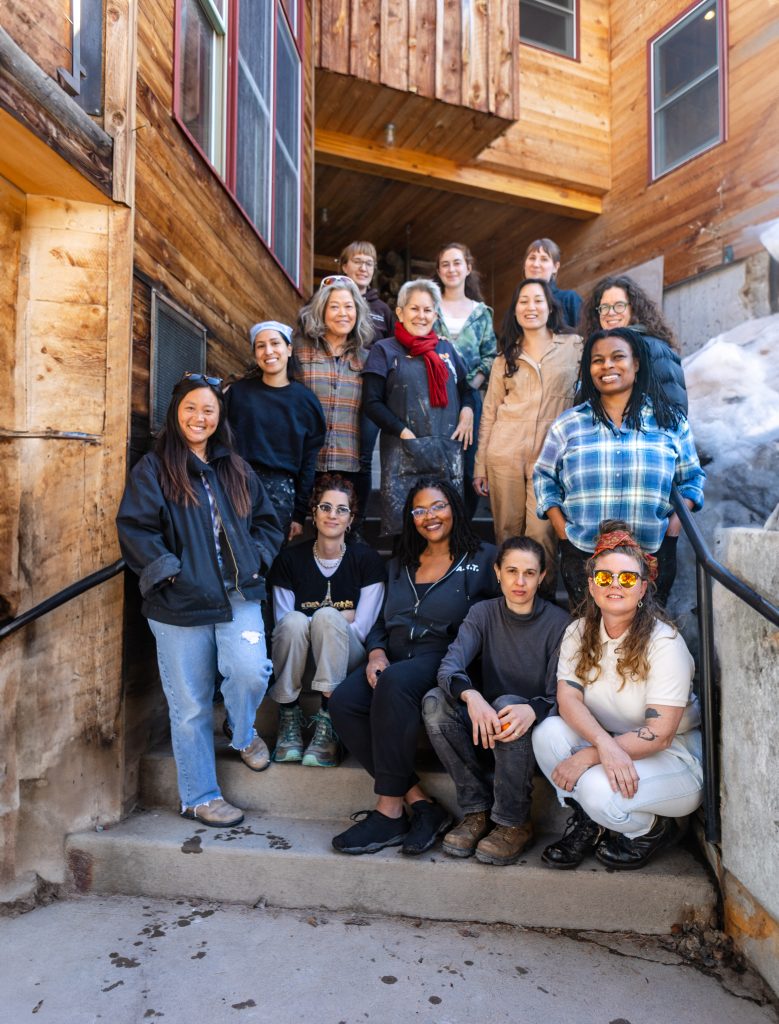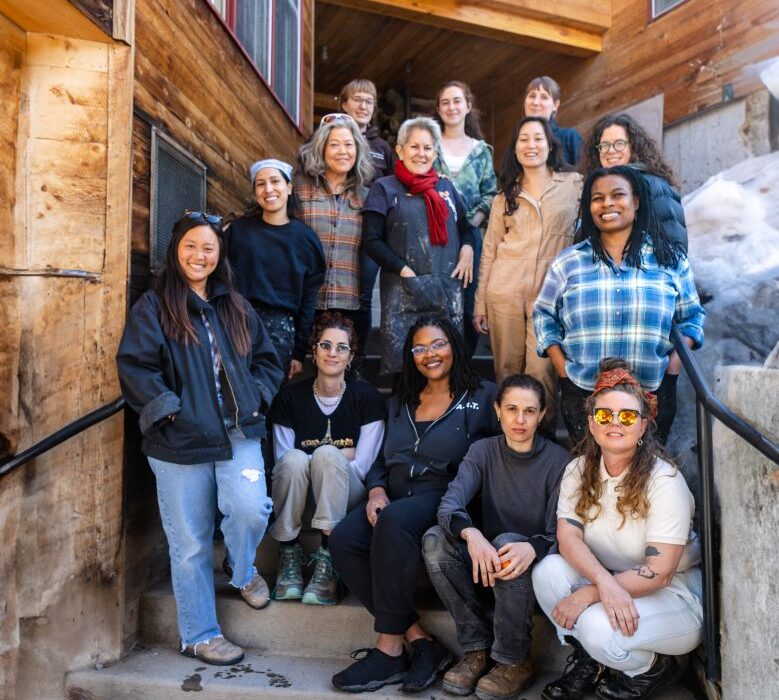
Anderson Ranch/Courtesy photo
For many working artists today, it is difficult to find the time and resources to enjoy five uninterrupted weeks to focus on their work in a place as peaceful as Anderson Ranch Arts Center in Snowmass. That’s why admittance to the ranch’s long-running winter and spring Artists-in-Residence program is sought after by a diverse set of artists every year.
The current group of artists made up of all women, have been there since March 19, and will stay on through April 23.
The program was created to foster creative, intellectual, and professional growth for both emerging and established visual artists and holds two winter and two spring sessions annually in Snowmass. Attendees are provided housing, studio space, and meals, and residencies are offered in ceramics, new media, photography, furniture design, woodworking, painting, drawing, printmaking, and sculpture.
“My time in this program has been going fabulous. I am having a ball, truly,” said artist Monica Curiel. “It’s such a great environment to create; the view of the mountains is amazing, and the accessibility to the different types of mediums you can dabble in has been eye-opening for me.”
Curiel is a first-generation Mexican-American born in Texas to immigrant parents from Jalisco, México, who work as laborers and now resides in Denver.
As a child, she accompanied her father when he worked on construction sites and helped her mother clean homes. She draws on these early experiences, often using materials such as plaster, house paint, cement, and grouting tools.
“My work explores the duality of identity, and for me, that’s being a Mexican-American,” she said. “In my practice, I aim to bridge the boundary between art and design. Breaking stereotypes of things belonging in certain categories is something that really drives me, due to my experience of ‘you’re not Mexican enough,’ or ‘you’re not American enough’ and wanting to explore those things in art and design. And using that to honor the places I come from and my heritage but also the dualities and complexity of that.”
While she always had an interest in drawing and living a creative life, it wasn’t until she found herself at 19, diagnosed with cancer during her freshman year at the Fashion Institute of Design and Merchandising (FIDM) in Los Angeles did she began to define her point of view as an artist.
“My life trajectory had a little bit of a dramatic turn as I was diagnosed with cancer at the age of 19,” she said. “It was a real-time contemplation. ‘Where do I belong in society? What do I want to contribute?’ The greater questions that these health scares force you into asking.”
She would spend the next eight years studying and exploring different mediums, interior design and architecture, finally graduating with a Bachelor of Fine Arts from University of Kansas.
“My belonging, or my identity, really were formed when I was able to express an interest or have a practice and things in these different subjects,” she said. “It wasn’t until I was cancer-free and able to express those interests and dabble in them that I realized, for me, is really a mainstay. It really kept me alive and with purpose.”
Like Curiel, Haitian-American artist Vickie Pierre came to Anderson Ranch to explore ideas of identity and culture through her work.
“My work is very female-centric,” she said. “I’m thinking about my identity and connections between my Haitian heritage and the connections to European history but also mythology. I’m very interested in the mythology and kinds of magic of other cultures, particularly as they relate to women. I use a lot of references to deities, different cultural deities in my collage works. I also do installations, and they often wind up looking like altars. I see them as being kind of a pathway, so it’s like I’m building this kind of portal.”
Pierre has always had an artistic bent, drawing in her textbooks and getting in trouble for it as a young girl, but it wasn’t until she encountered a group of friends in the Lower East Side of Manhattan in the late 1980s/early 1990s who attended School of Visual Arts that she decided that becoming an artist was her destiny.
“That was when I first started thinking, ‘Oh, this is really cool. These people are making art,’” she said. “But I didn’t actually apply until some years later, when I was 22 or 23. I was living in LA at the time, and I decided to go back to New York to go to college, and I applied to SVA, and that was the beginning of what I’m experiencing now.”
Pierre’s work and process are informed and inspired by memory, fantasy, surrealism, popular culture, and the decorative and ornamental arts. Her work also considers multilayered feminine and historical tropes relative to contemporary social and cultural realities. This inspiration has manifested itself in years of collecting diverse materials that often serve as muses in her daily practice and as physical elements within her assemblages and installations.
She said having the time to spend at Anderson Ranch to focus on her work has been an important creative experience.
“This has been amazing,” she said. “Everyone is just so kind and helping you figure out what you want to do. And then just all these options. I came here to do something specific, but there’s ceramics, wood sculpture, and printing. So, while I’ve been focused on painting and collaging and my installation stuff, I’ve also been working in ceramics and other spaces.”
Another advantage to being part of the program is the opportunity to gain feedback from prominent visiting artists and critics while in residency. This week, the residents will have a chance to interact with visiting critic Joeonna Bellorado Samuels, the senior director at Jack Shainman Gallery in New York.
“I consider advocacy to be really the foundation and backbone of whatever I do,” she said. “I think working with artists from a lot of perspectives is advocacy work especially you know, as working in a gallery and representing artists is absolutely what we do; we advocate for the artist out there teaching, you know, the world about what the artist is doing and thinking about it — the first line of defense kind of for them, growing their careers.”
She said that she is interested in having thoughtful conversations with the artists while she is here as opposed to offering them suggestions on how to do things better.
“My style is just asking questions and getting a conversation going. I’m there to learn about the work as much as I’m there to try to help them grow,” she said. “If in that I can be helpful through just having the conversation, I hope that is the case.”
Samuels will also be hosting a lecture in the Schermer Meeting Hall at Anderson Ranch on Thursday from 5:30-6:30 p.m. Visiting critic lectures are free, open to the public, and available in person or via livestream. For those interested, a buffet dinner will be served for $33.40 a person immediately after the lecture.
For more information and RSVP: andersonranch.org/events/visiting-critic-lecture-joeonna-bellorado-samuels

